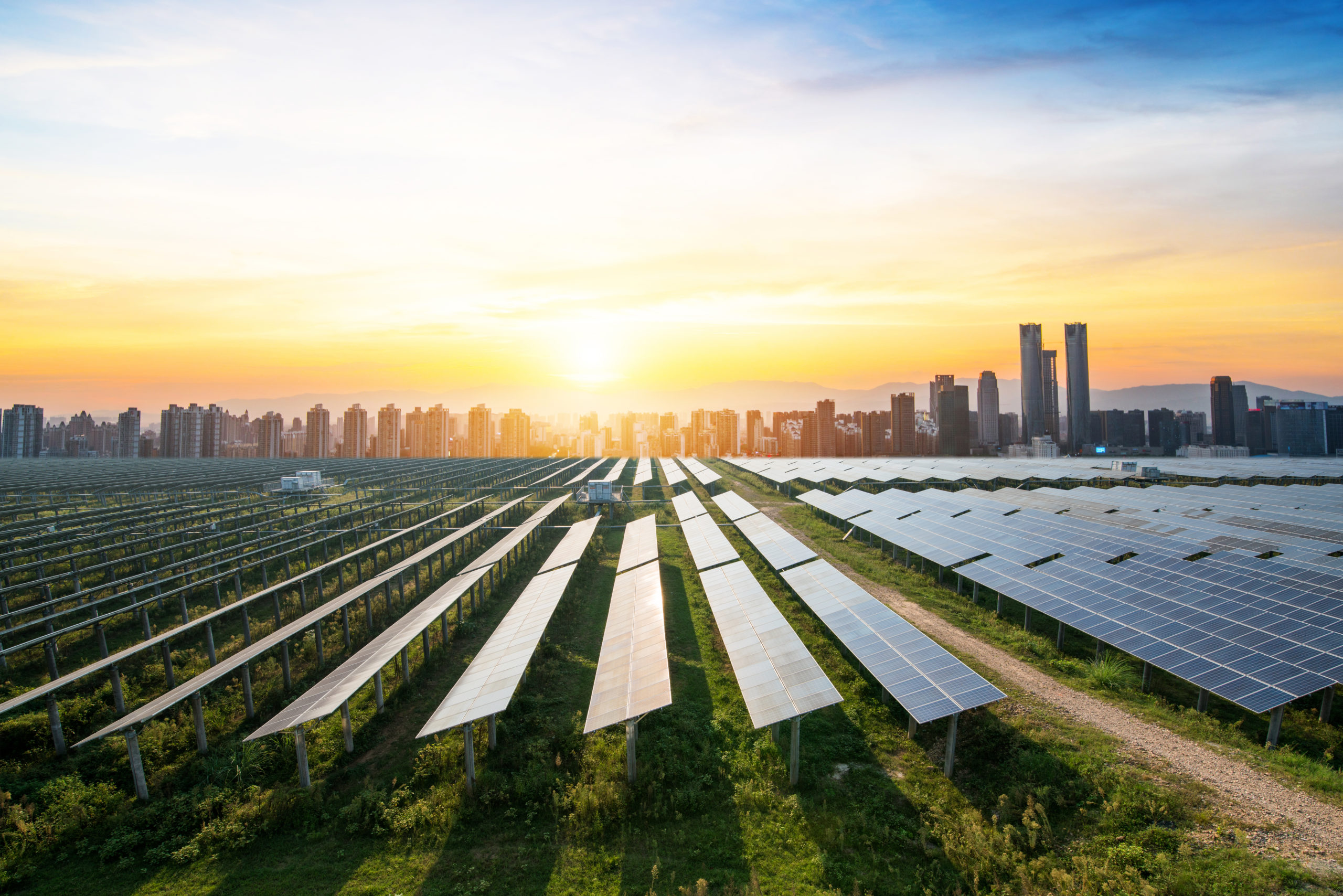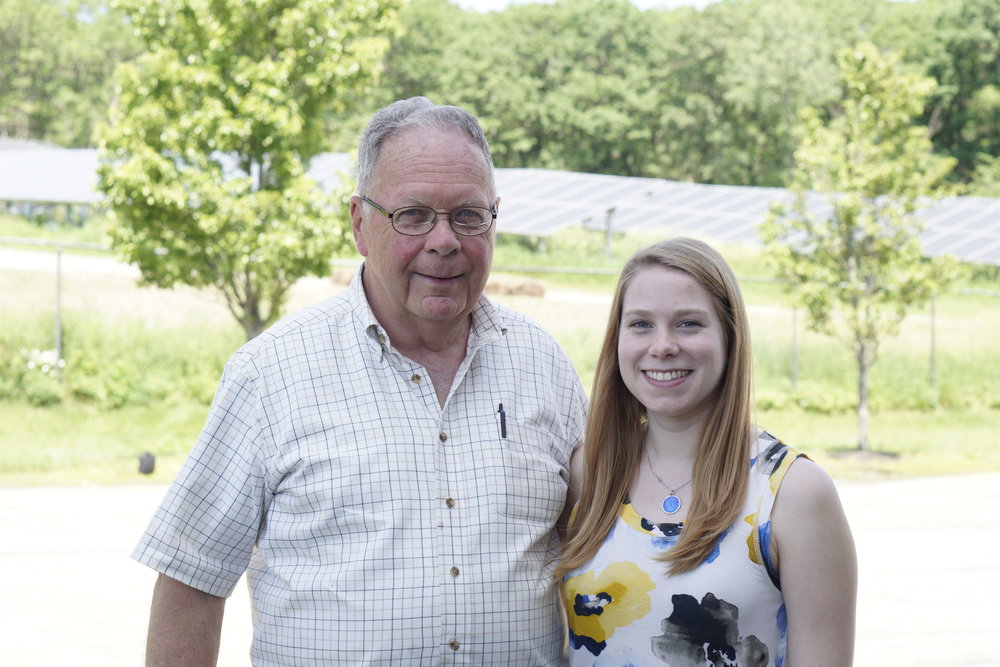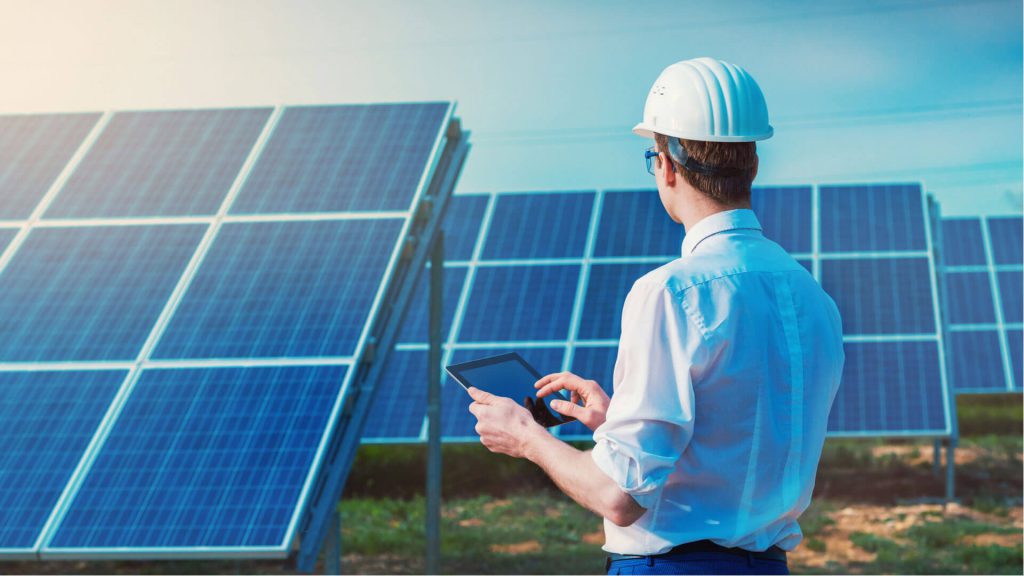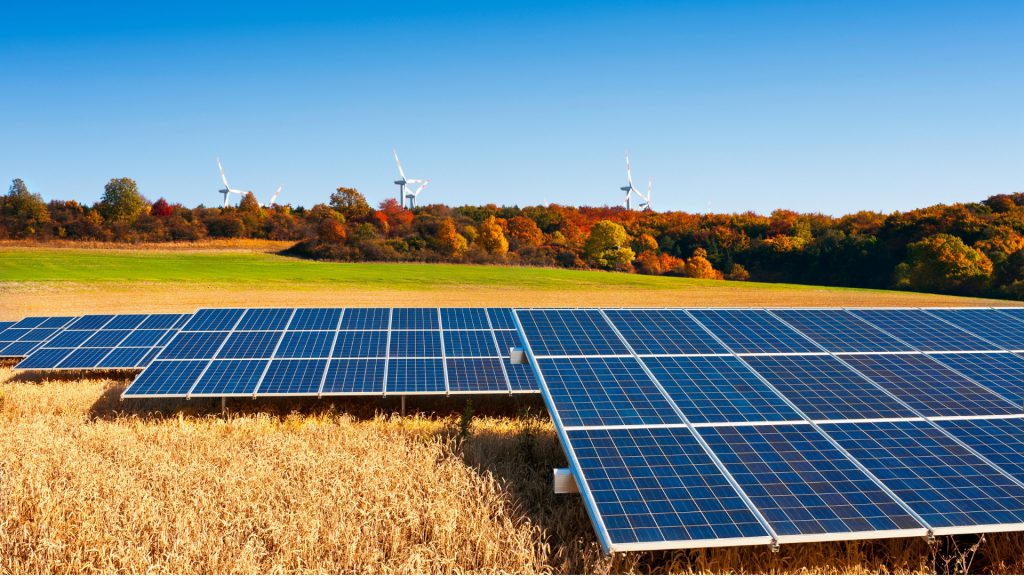What exactly is community solar, and what does it mean to enroll in a local solar farm? Learn the basics of community solar in 2020 here.
What do you think when you hear of solar power? Panels on top of roofs? Environmentally-friendly energy that you would like to have one day, but probably won’t get right now? Community Solar is fundamentally simplifying the process for individuals and communities across the country to go solar.
Community solar allows people to get a portion of a solar farm in their area. In doing so, they support local renewable energy and save on their electricity costs–without installing anything on their property. By removing home installation from the equation, community solar gives access to solar energy to people who haven’t been able to install panels on their roofs.
Table of Contents
What Is Community Solar?
A community solar program allows you to opt-in to a local solar farm. When you choose to join, a portion of the local solar farm becomes yours. Your solar share, or the specific percentage of the solar farm allocated to you, is sized to match the energy you use in your home just like rooftop panels would.
Solar developers build community solar farms that hook up to the existing grid. Utilities like this because the solar farm provides them cheap, reliable power and helps them reduce their emissions–all without asking them to build out their own new infrastructure. Local residents like it even more because it provides them with an affordable way to go green and earn reliable savings every month.
Whether or not they join community solar, everyone in the community benefits from cleaner air and healthier people. Those that do sign up, however, generally get to save 5-15% on their electricity bill. Depending on the size of the solar farm, the number of households that can enroll can range from 40 to over 400.
Customers who enroll in community solar earn “solar credits” on their bills, giving them a discount every month. Picture rooftop solar: your solar panels produce energy, your utility gives you credits for that power, and you save money. Community solar is similar, but in this case you get credits from your solar share nearby instead of your roof.
It’s the solar developer’s and the utility’s way of giving back to the people that support clean energy.
What Makes Community Solar Possible?
Community solar takes advantage of laws similar to the ones that give savings to households with rooftop solar panels. “Net metering” allows people who produce their own solar energy to sell that energy back into the grid. For community solar, utilities use a process called “virtual net metering,” which means that when your share of the community solar farm produces energy, you get the credit on your utility bill–just as if you had produced it on your own roof.
In a perfect world, your solar share produces exactly as much energy as you need for your home use. In reality, sometimes you’ll produce a little extra, so for every extra watt you produce that you don’t use, your utility will give you a credit that you can use to pay for your future energy use. Whenever your solar panels don’t produce enough to cover 100% of your energy use (usually the winter), you can use those banked credits to maximize your savings.
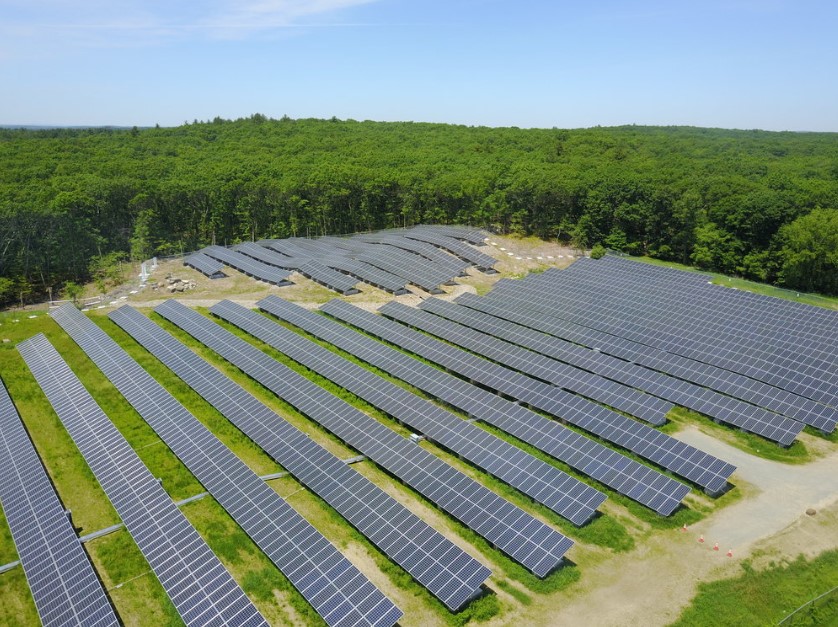
This Massachusetts solar farm produces enough solar energy to power several hundred homes.
Where Are Community Solar Farms Located?
We’ve all seen solar panels going up on rooftops, and many of us have seen pictures of large-scale utility solar farms that go on for miles. Community solar farms generally fall somewhere in the middle. Many community solar installations are built on capped landfills, open fields, or the roofs of warehouses, supplying energy to the electricity grid and allowing nearby residents to finally take part in the solar revolution. If you see a small solar installation near you, you might actually be able to get a share of it for yourself!
Models for Community Solar: Ownership Or Subscription?
Generally speaking, there are two types of community solar. In the ownership model, you buy or lease part of a solar farm for an upfront fee. Every month after you sign your contract, you’ll see a credit on your utility bill for the energy that the panels generate–allowing you to earn back your investment over the life of the contract. Owning the panels may also make you eligible for federal tax credits and state incentives.
This model provides solar access for those who want to install rooftop solar but can’t because of rooftop shading, orientation, or other structural issues. But there are many more people who don’t have the savings or income to afford such a significant upfront cost. That’s why we have a soft spot in our hearts for the second kind of community solar: subscription-based membership.
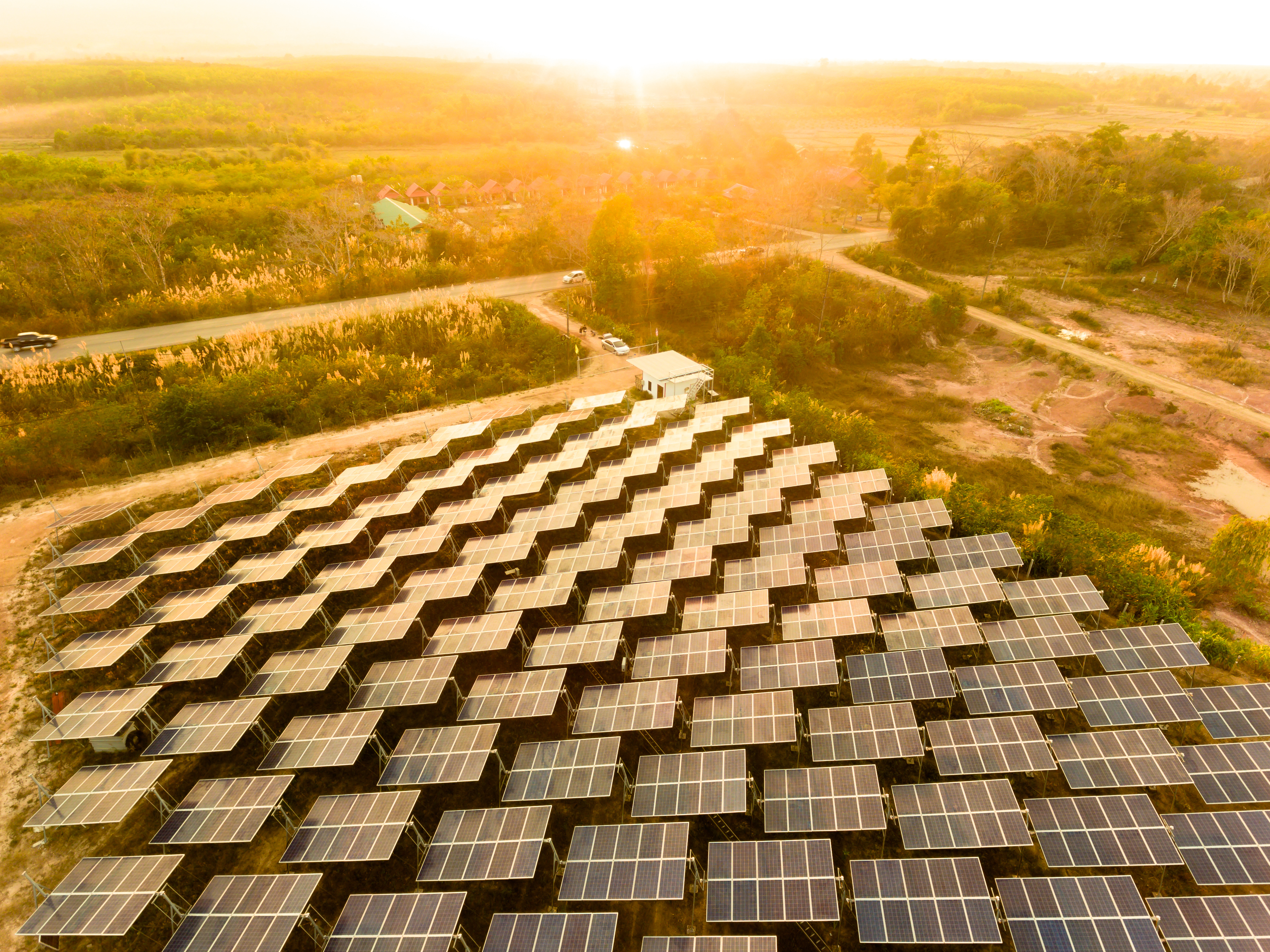
Community Solar farms come in all shapes and sizes!
Community Solar Subscriptions Help You Skip the Line on Savings
Under this option, the customer pays no upfront fee at all and instead receives their solar electricity as a monthly service. You sign up for enough panels to cover your energy use, and then you can simply enjoy your discounted electricity. As with the ownership model, participants see a credit on their utility bill for the energy their panels generate. Customer savings vary depending on the geography and solar developer, but the usual discount is 10% on your electricity bill.
Subscriptions Increase Access to Affordable, Clean Energy
Because there’s no upfront cost, this kind of contract allows new communities to access solar energy. However, it’s still not always easy to join community solar. Most community solar companies ask customers to sign 20-year contracts and have 700+ FICO credit scores to be a part of their projects.
To bring solar to all Americans, we need shorter contracts with more realistic credit requirements. Most people don’t know what will be happening in their life in the next 5 years, let alone 20. How can we expect them to sign up for 20 years of energy? And when it comes to credit scores, millions of Americans don’t meet the 700+ FICO score requirement. Through more equitable qualification mechanisms, we can better predict payment behavior and make solar an opportunity for everyone.
Already, we’re seeing a lot of progress in the community solar industry, with customer-friendly solar farms popping up in new states and towns all the time. Many have contracts as short as 1-2 years, making them viable for young workers, retired folks, and anyone in between. We encourage everyone to do their own research and find out what’s best for them and their families, whether it’s putting panels on their roof or enrolling in a community solar farm.
